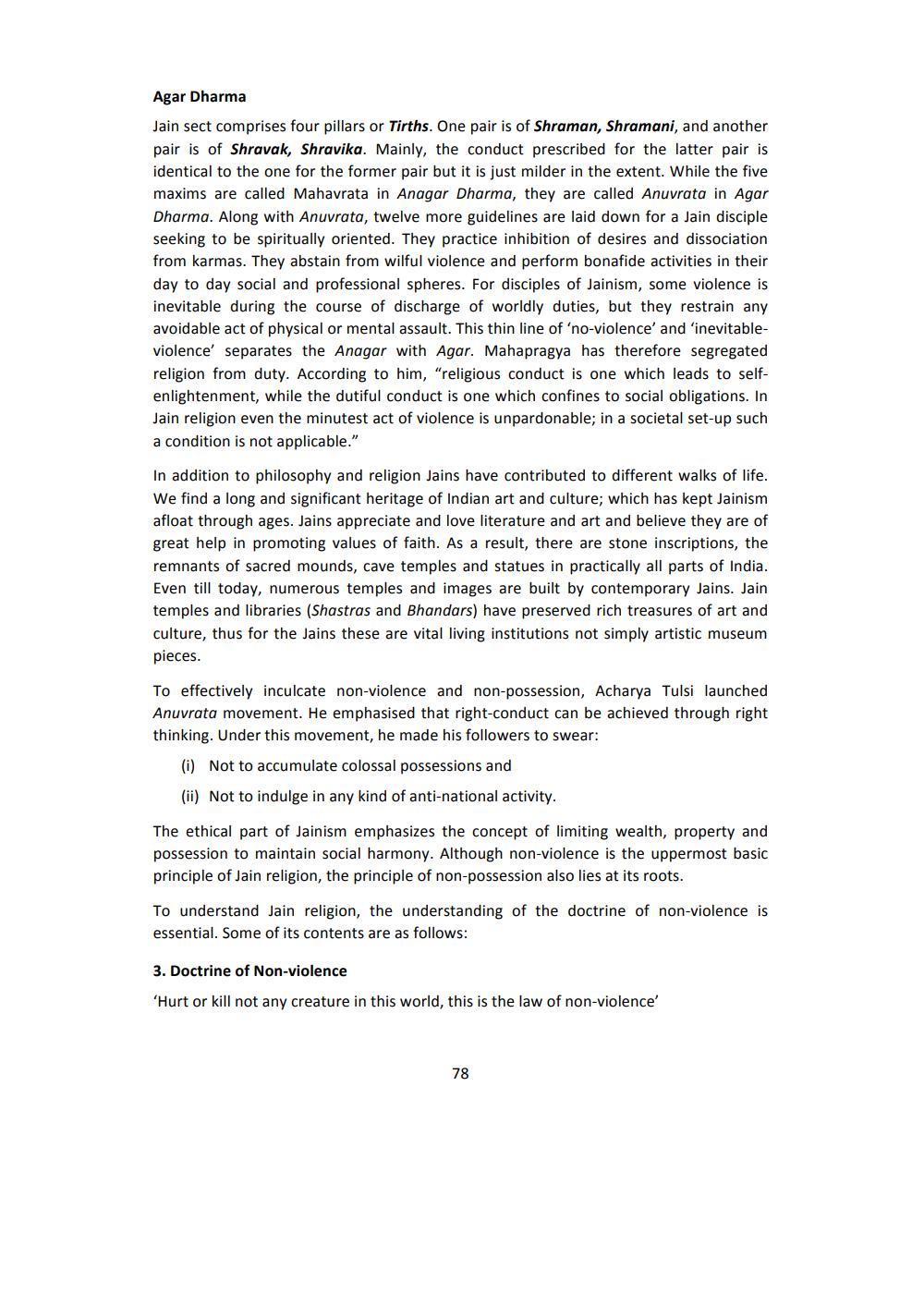________________
Agar Dharma
Jain sect comprises four pillars or Tirths. One pair is of Shraman, Shramani, and another pair is of Shravak, Shravika. Mainly, the conduct prescribed for the latter pair is identical to the one for the former pair but it is just milder in the extent. While the five maxims are called Mahavrata in Anagar Dharma, they are called Anuvrata in Agar Dharma. Along with Anuvrata, twelve more guidelines are laid down for a Jain disciple seeking to be spiritually oriented. They practice inhibition of desires and dissociation from karmas. They abstain from wilful violence and perform bonafide activities in their day to day social and professional spheres. For disciples of Jainism, some violence is inevitable during the course of discharge of worldly duties, but they restrain any avoidable act of physical or mental assault. This thin line of 'no-violence' and 'inevitableviolence' separates the Anagar with Agar. Mahapragya has therefore segregated religion from duty. According to him, "religious conduct is one which leads to selfenlightenment, while the dutiful conduct is one which confines to social obligations. In Jain religion even the minutest act of violence is unpardonable; in a societal set-up such a condition is not applicable."
In addition to philosophy and religion Jains have contributed to different walks of life. We find a long and significant heritage of Indian art and culture; which has kept Jainism afloat through ages. Jains appreciate and love literature and art and believe they are of great help in promoting values of faith. As a result, there are stone inscriptions, the remnants of sacred mounds, cave temples and statues in practically all parts of India. Even till today, numerous temples and images are built by contemporary Jains. Jain temples and libraries (Shastras and Bhandars) have preserved rich treasures of art and culture, thus for the Jains these are vital living institutions not simply artistic museum pieces.
To effectively inculcate non-violence and non-possession, Acharya Tulsi launched Anuvrata movement. He emphasised that right-conduct can be achieved through right thinking. Under this movement, he made his followers to swear:
(i) Not to accumulate colossal possessions and
(ii) Not to indulge in any kind of anti-national activity.
The ethical part of Jainism emphasizes the concept of limiting wealth, property and possession to maintain social harmony. Although non-violence is the uppermost basic principle of Jain religion, the principle of non-possession also lies at its roots.
To understand Jain religion, the understanding of the doctrine of non-violence is essential. Some of its contents are as follows:
3. Doctrine of Non-violence
'Hurt or kill not any creature in this world, this is the law of non-violence'
78




